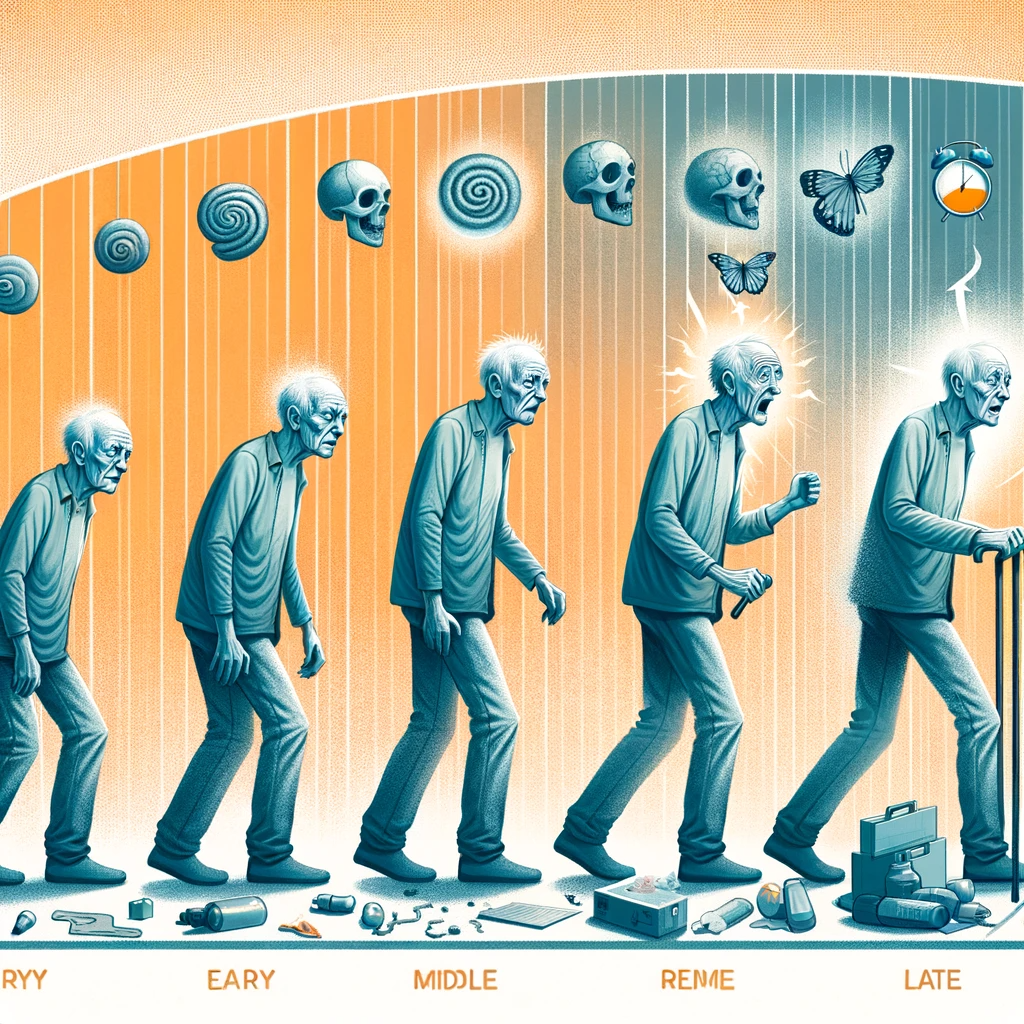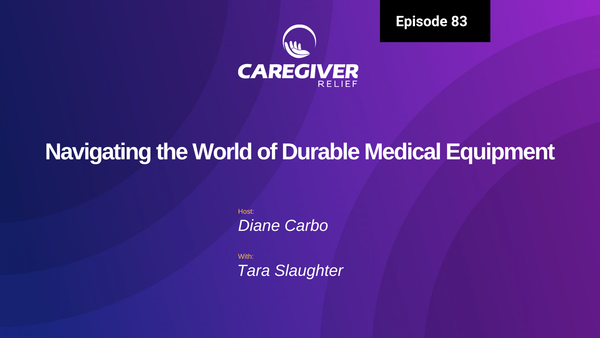Managing Restlessness and Agitation in Dementia: Strategies and Solutions for Calm and Comfort
Managing Restlessness and Agitation in Dementia explores effective techniques to alleviate restlessness and agitation in dementia patients. It focuses on personalized care, innovative tools like GPS tracking, and tailored activities to enhance comfort and safety.

Restlessness and agitation are common and challenging symptoms for individuals with dementia, often causing distress for both the affected person and their caregivers. Understanding restlessness, its causes, and effective strategies to alleviate these behaviors is crucial in dementia care.
Deciphering Restlessness in Dementia: Symptoms, Causes, and Stages
Understanding restlessness in the context of dementia is pivotal to providing effective care and improving the quality of life for those affected by this condition. Restlessness, characterized by an omnipresent feeling of unease or a profound inability to settle or relax, is a common symptom associated with dementia. This feeling of restlessness can lead to various behaviors such as wandering, a prevalent issue that poses safety risks, and fidgeting, which is often a physical manifestation of internal turmoil.
Recognizing the Symptoms of Restlessness:
The symptoms of restlessness in dementia patients can be diverse and may include physical indicators such as pacing, repeated adjusting of seating or position, and aimless movement. Psychologically, this restlessness can surface as a persistent feeling of discomfort or dissatisfaction with the environment. Understanding these symptoms is crucial as they can be indicative of the disease's advancement and may also signal underlying issues that need to be addressed, such as physical discomfort or emotional distress.

Understanding the Progression:
Restlessness often evolves as dementia progresses. In the early stages, a person with dementia may experience restlessness due to a growing awareness of their cognitive decline, leading to frustration and anxiety. As the condition advances, cognitive impairments intensify, and the ability to communicate needs or discomfort becomes limited, potentially escalating the individual's sense of restlessness and agitation.
Agitation in Dementia:
Agitation in dementia is a multifaceted symptom. It may manifest as verbal outbursts, such as shouting or making repetitive noises, or physical actions, such as hitting, pushing, or throwing objects. Agitation can be a response to the internal experience of restlessness, but it can also arise from environmental factors, changes in routine, or physical discomfort. Recognizing and distinguishing these behaviors as symptoms of dementia can aid caregivers in seeking appropriate interventions.
Restless Behaviors:
Behaviors associated with restlessness and agitation in dementia may vary from mild to severe. Mild restlessness might be seen as an inability to sit still during activities or meals, while severe restlessness could involve constant movement or attempts to leave a safe environment. It's essential to observe these behaviors closely as they can serve as communication from the individual about their needs or discomforts.
What Causes Restlessness:
The causes of restlessness in dementia are as complex as the condition itself. They can range from psychological factors, such as anxiety or depression, to physiological causes like pain, medication side effects, or sleep disturbances. Environmental triggers, such as noise, clutter, or even the presence of unfamiliar people, can also provoke restlessness in individuals with dementia.

Restlessness in Different Stages of Dementia:
Restlessness can appear at any stage of dementia but is often more noticeable in the middle to late stages. During these stages, cognitive function declines, and the ability to articulate discomfort or needs diminishes. This can lead to an increase in restless behaviors as the individual struggles to communicate their experiences.
Overall, understanding restlessness in dementia is about recognizing the symptoms, identifying the causes, and adapting care strategies to meet the evolving needs of the individual. By doing so, caregivers can help mitigate the effects of restlessness and agitation, improving the comfort and wellbeing of those living with dementia.

Understanding the Root: Exploring the Causes of Restlessness in Dementia
When delving into the causes of restlessness in individuals with dementia, it's essential to consider a spectrum of potential triggers that range from physical to environmental and psychological factors. This restlessness, often accompanied by symptoms of agitation, can significantly affect the quality of life for patients and pose complex challenges for caregivers.
Physical Discomfort Leading to Restlessness
Physical ailments are a primary source of restlessness. Conditions such as chronic pain, which may not be easily communicated by someone with cognitive decline, can cause significant discomfort, manifesting as restlessness or agitation. Similarly, the basic needs of hunger or thirst can become triggers when the individual is unable to express these needs verbally. It's critical to regularly assess physical well-being as a potential source of restlessness, ensuring that basic comfort is not overlooked.
The Role of Medication Side Effects
Medications are a double-edged sword in dementia care. While they can alleviate certain symptoms of the disease, they can also introduce side effects that contribute to restlessness. For example, some medications may cause insomnia, increased anxiety, or even hyperactivity—all of which can be perceived as restlessness or agitation. Monitoring and adjusting medication regimens, in consultation with healthcare providers, can help mitigate these effects.

Environmental Influences on Restlessness
Environmental changes can be particularly disorienting for someone with dementia, leading to feelings of restlessness. An unfamiliar setting, excessive noise, lack of a routine, or even changes in lighting can be unsettling. Creating a calm, familiar environment with consistent routines can help reduce these types of restlessness triggers.
Disrupted Routines and Dementia
For individuals with dementia, a structured routine offers a sense of security and predictability. When routines are disrupted—whether by a change in the caregiver, a different daily schedule, or even a move to a new residence—this can lead to a significant increase in restlessness and agitation. Maintaining consistency where possible can be a comforting element for those experiencing cognitive decline.
Understanding Restlessness as Dementia Progresses
As dementia progresses, the complexity of identifying the exact causes of restlessness increases. Cognitive deterioration makes it more difficult for patients to articulate their experiences, needs, and discomforts, which can exacerbate feelings of restlessness. Caregivers may need to become 'detectives', looking for non-verbal cues and changes in behavior to understand and address the underlying causes of restlessness.
Addressing the Multifaceted Causes of Restlessness
Restlessness in dementia is a multifactorial issue that requires careful observation and management. By exploring and understanding the various causes—from physical discomfort and medication side effects to environmental stresses and routine disruptions—caregivers can tailor interventions that reduce restlessness and improve the overall well-being of those with dementia. Collaborative care approaches and regular assessments are key to effectively managing these challenging behaviors.
Solutions for Restlessness and Agitation
The key to managing restlessness and agitation lies in a combination of personalized care and the use of adaptive tools. For those who wander, the Smart Sole GPS system offers a way to ensure the safety of your loved one by keeping track of their location at all times.
Fidget Aprons and Blankets: Tools for Calm
Fidget aprons and blankets are specially designed to provide sensory stimulation through textures and activities that engage the hands. These tools can be incredibly effective in reducing feelings of restlessness and providing a soothing distraction for those with dementia.
Soothing Sounds: The Pillow with an Audio System
Introducing a pillow equipped with an audio system can have a remarkable calming effect. Playing soothing music can help encourage relaxation and sleep, offering a gentle way to ease the agitation that often accompanies dementia.
Engagement through Activities
Engaging individuals with dementia in activities is a proactive way to avoid challenging behaviors associated with restlessness. Tailored activities that match the person’s interests and abilities can provide focus and enjoyment, reducing feelings of restlessness and the potential for agitation.
Creating a Supportive Environment
In conclusion, while restlessness and agitation can be difficult aspects of dementia to manage, there are effective strategies and tools that can help. By creating a supportive environment tailored to the individual's needs, incorporating calming tools, and engaging in appropriate activities, caregivers can provide comfort and reduce the challenging behaviors associated with dementia.
Products to reduce restlessness- stuffed toys and baby dolls





